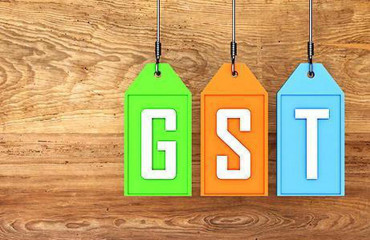
The release of the Annual Survey of Unincorporated Sector Enterprises (ASUSE) by the National Statistical Office (NSO) fills an important data gap in our understanding of what is happening in the unorganized sector. The NSO released two reports of the ASUSE: for 2021-22 and 2022-23.
The release of the Annual Survey of Unincorporated Sector Enterprises (ASUSE) by the National Statistical Office (NSO) fills an important data gap in our understanding of what is happening in the unorganized sector. The NSO released two reports of the ASUSE: for 2021-22 and 2022-23.
It used to be done every five years (one in 2015-16 followed the 2010-11 survey), but is now an annual survey. While the 2021-22 survey was covid-impacted and less likely to be accurate, the 2022-23 survey is the first post-pandemic one.
The unorganized sector is a significant part of the Indian economy, much more for the employment it accounts for than its contribution to GDP. The two reports offer a look at trends that may help us make sense of two economic shocks, demonetization and the GST rollout, both of which were seen to have hit the unorganized sector much harder than the formal sector.
Also read: Shrinking informal economy rings alarm bells for jobs in India
Preliminary estimates from the ASUSE 2022-23 confirm the apprehension that the informal sector has not kept pace with the rest of the economy. As in previous surveys, it covers all activities barring agriculture and construction. Total informal enterprises rose a bit to 65 million from 63.4 million in 2015-16. Around 85% are own-account-enterprises (OAEs), with the rest using some hired workers.
Between 2015-16 and 2022-23, informal businesses with hired workers declined, while OAEs grew. The net impact of this is that the total number of workers in the unorganized sector has fallen from 111.3 million in 2015-16 to 110 million in 2022-23. These workers represent almost half of all the non-farm, non-construction workers in our economy.
The informal sector's contribution to national income has also dropped. While gross value added (GVA) by the sector increased at 7% per annum in real terms between 2010-11 and 2015-16, it actually declined at 0.5% per annum between 2015-16 and 2022-23.
GVA per enterprise increased at 5% per annum between 2010-11 and 2015-16, but declined at 0.85% per year between 2015-16 and 2022-23. A similar trend is seen in GVA per worker, with the former period reporting an increase and the latter a decline.
Most of these enterprises are barely generating any income. In 2022-23, GVA per enterprise was ₹238,168 with OAEs reporting only 127,073 per unit. That means 85% of unorganized-sector enterprises were generating around ₹10,000 per month. The situation for hired workers was no better.
Average emoluments for hired workers in informal enterprises that had such recruits was ₹124,842 per annum, or around ₹10,000 per month. Again, we saw significantly higher growth in emoluments between 2010-11 and 2015-16, but a real decline in emoluments per worker between 2015-16 and 2022-23.
Also read: India's youth unemployment rate among highest in world, says ex-CEA; Netizens call it 'heights of propaganda'
These trends from ASUSE surveys are not surprising, given that data from many other sources has also suggested that the unorganized sector has not seen any growth in its size either in terms of the number of establishments or count of workers employed.
So is the case with incomes being generated by the sector. These have seen a real decline on almost all relevant indicators, be it GVA or the earnings of hired workers. In fact, these confirm the trend of a decline in the real earnings of regular workers observed in the NSO's employment surveys and a decline in real wages recorded by the labour bureau.
Several other indicators of the operational and economic characteristics of enterprises also suggest very low or no improvement in conditions. Only 6% reported using computers, marginally higher than the 5% who reported using them back in 2015-16.
The sector's situation in terms of access to capital in general and credit in particular also suggests that these small businesses remain outside the purview of most government schemes.
Estimates from the ASUSE confirm the fear of a growing segregation in the economy, with growth largely driven by the large formal sector, while the informal sector lags behind. While demonetization and GST may have contributed to their woes, along with the pandemic, their under-performance is also a result of medium- and long-term policy choices that worsened their prospects.
Also read: RBI data reveals more jobs in India, private surveys paint bleak unemployment picture, flag quality concerns
A revival of this sector is necessary not just to improve incomes and demand in the economy, but also for any strategy to create employment. More importantly, for sustainable economic growth, we must correct the prevailing imbalance in how its rewards are being distributed across the economy. Don't overlook the informal sector.
